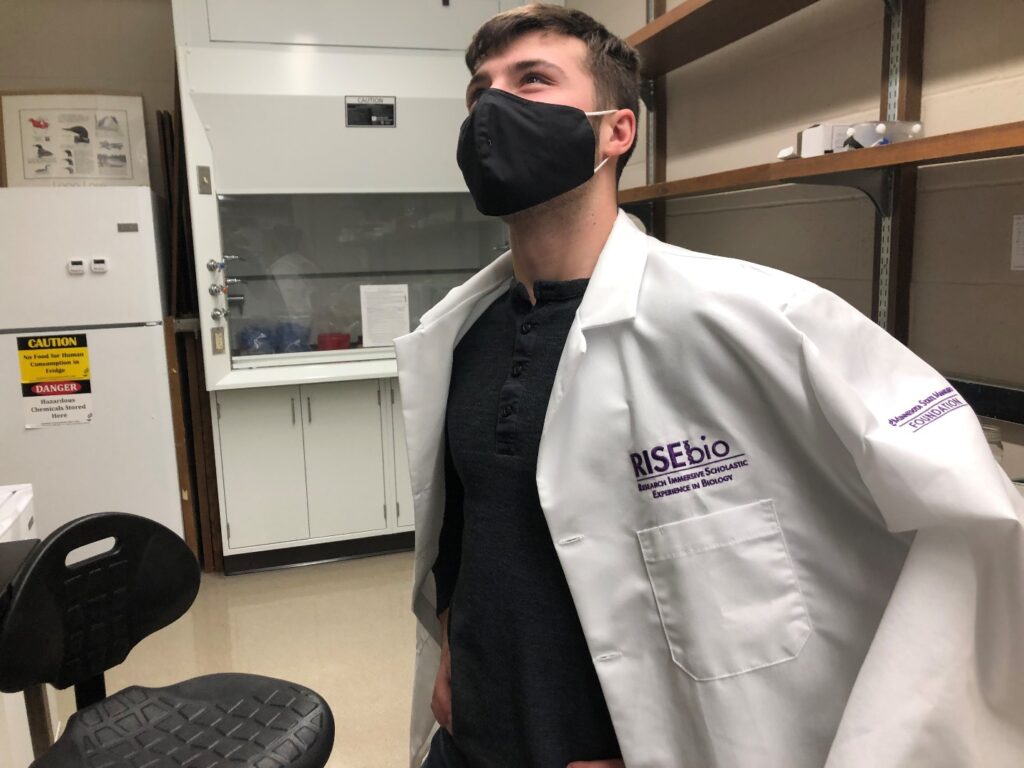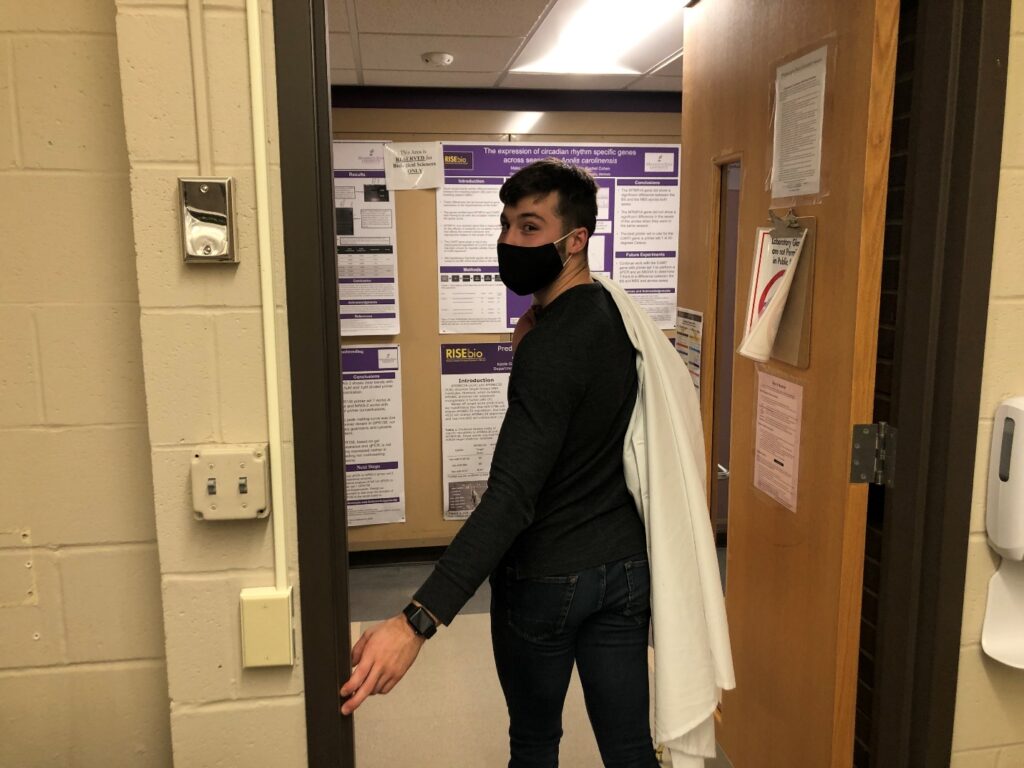By: Alex Wehrman and Matthew Bromann
October 30, 2020
Intro:

Hello! We are back with our final RISEBio blog post! We are nearing the end of our research into the brain and behavior of the green anole lizard, and with that means more focused work. In green anole lizards, there are genes that are “turned on” or “off” during breeding and non-breeding seasons. Our research is about a specific gene called DNA ligase 4, or LIG4 for short. A DNA ligase is used to repair broken DNA. Our gene is said to be more active during the non-breeding seasons, but we have to test that. We are finally getting into the phase where we test our hypothesis.
Specific content:

In the past few weeks, we finished four RNA isolations, which is taking a tissue, in our case the brain, and working with it until all that’s left is mRNA. This mRNA is normally used by the body to make cDNA or proteins for use in cells. For us, the RNA is used to create cDNA that we can test for our gene in. We were supposed to have a total of six samples of RNA, but we ruined two of our samples. We took our RNA and made cDNA out of it through a process called cDNA synthesis. In this process, we take our RNA, add some primers, and some nucleotides, and make cDNA much like we would a very small recipe. Of course, it’s much too small to make, so a machine does it for us. Once the machine takes our ingredients and makes it into cDNA, we then test to see if its good. We did this by finding its concentration, how pure it was, and then running it through a gel electrophoresis to test and see if we can find our gene in it. In the past week, we began a new set of lab procedures. The new work is called a quantitative polymerase chain reaction, or a qPCR for short. In a qPCR, we can test multiple DNA samples for our gene at once, about 96 samples to be exact. A qPCR needs samples to be put into a mix very similar to that of a regular PCR (the building blocks of DNA, primers, and others), but also has a fluorescent dye in it that a qPCR machine can pick up. This dye can mark when our gene is made and how much may be in the cDNA that we’re using. This is the process that we’ve be working up to in our research. So far, our practices for the qPCR have not been successful, but we got a few more things to tweak that should make it work.

Covid:
This has been a year to remember because of how strange lab and college has been with Covid-19. The whole experience is different due to wearing the masks and the restrictions of having only so many people in the lab/class. Covid-19 impacted our lab time because, after Thanksgiving, we will not be allowed to enter the lab, which will be the end of our research for the remaining year. Queue The Sound of Silence playing.
Conclusion:
As our research is quickly drawing to its conclusion, we think back to when we first joined this program. We think about all we have learned about not only biology, but of science and the research process. We think about all those who have helped us along the way: Dr. Sharlin, Dr. Cohen, our TAs Maria and Cai, our peer mentors Jane and Nicole, and the rest of RISEBio. Finally, we look to the future and where it may take us next.


